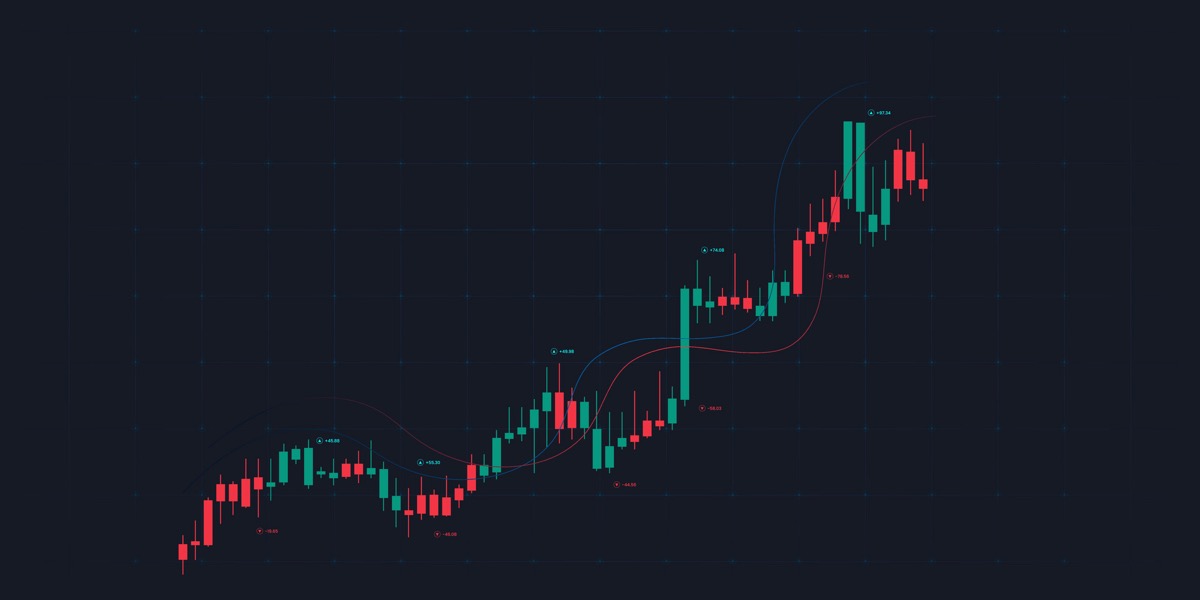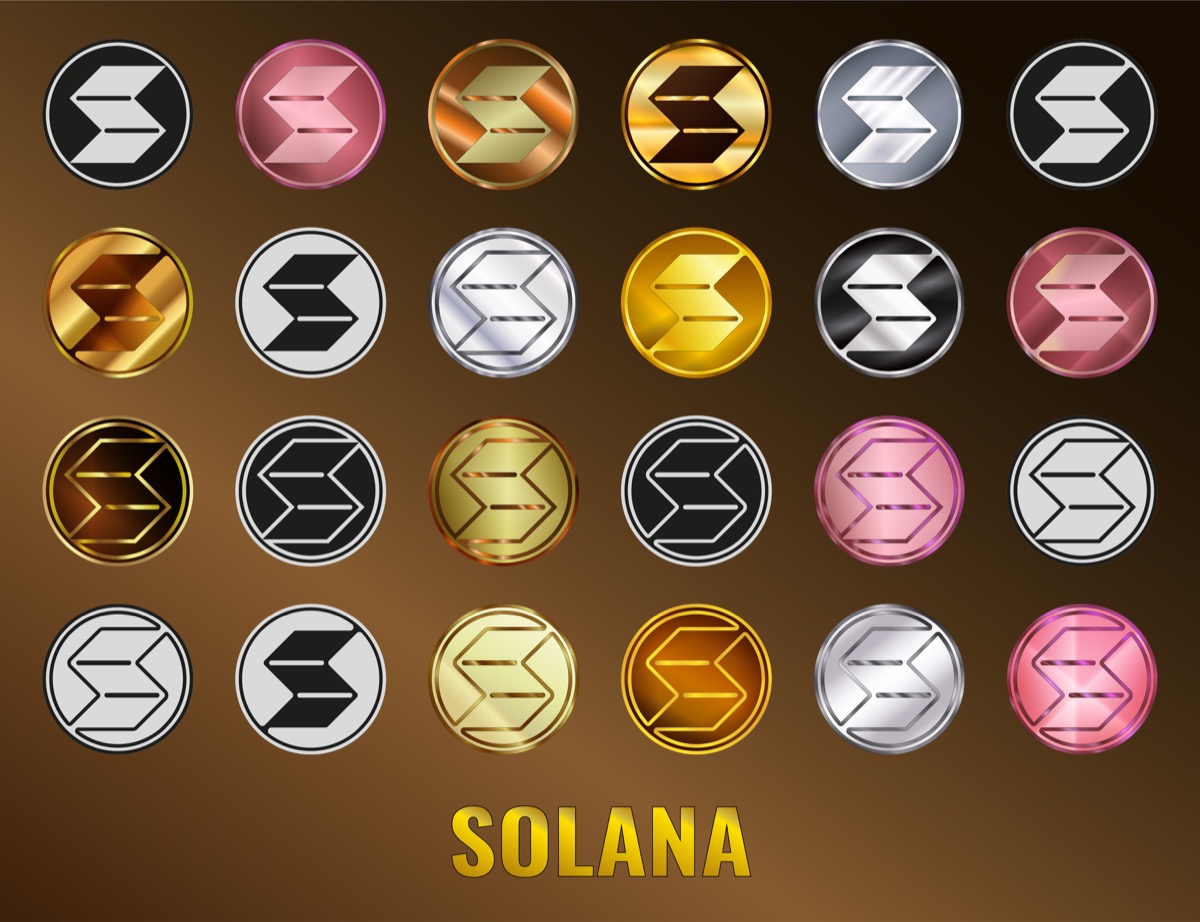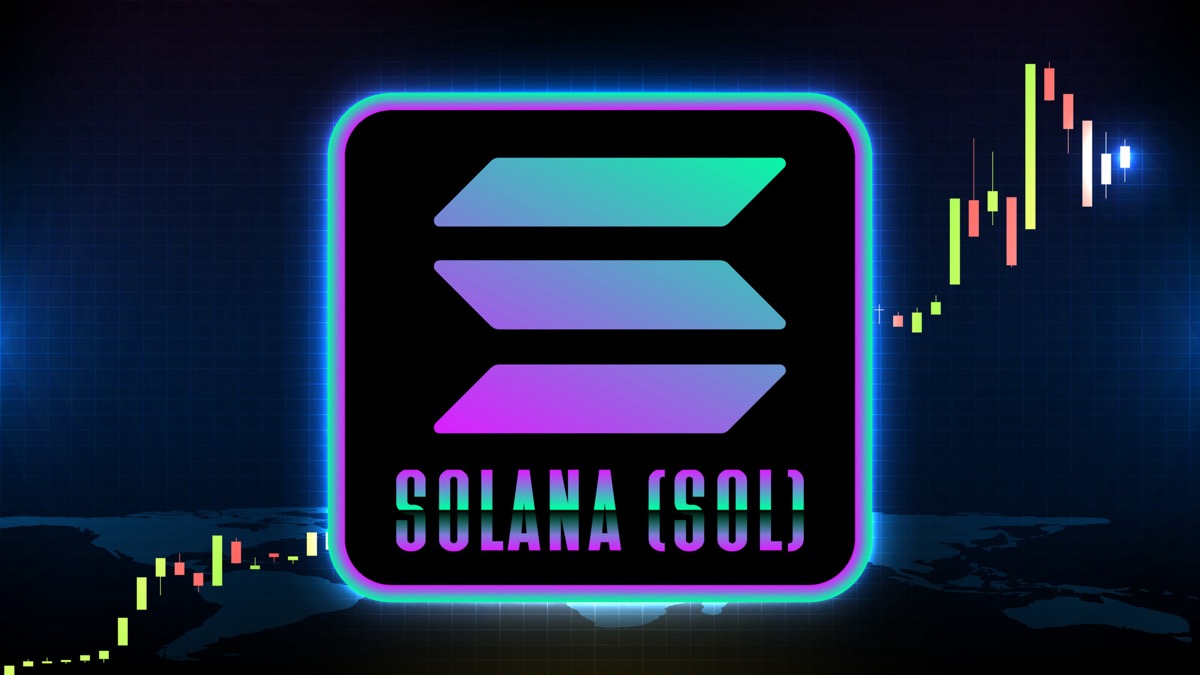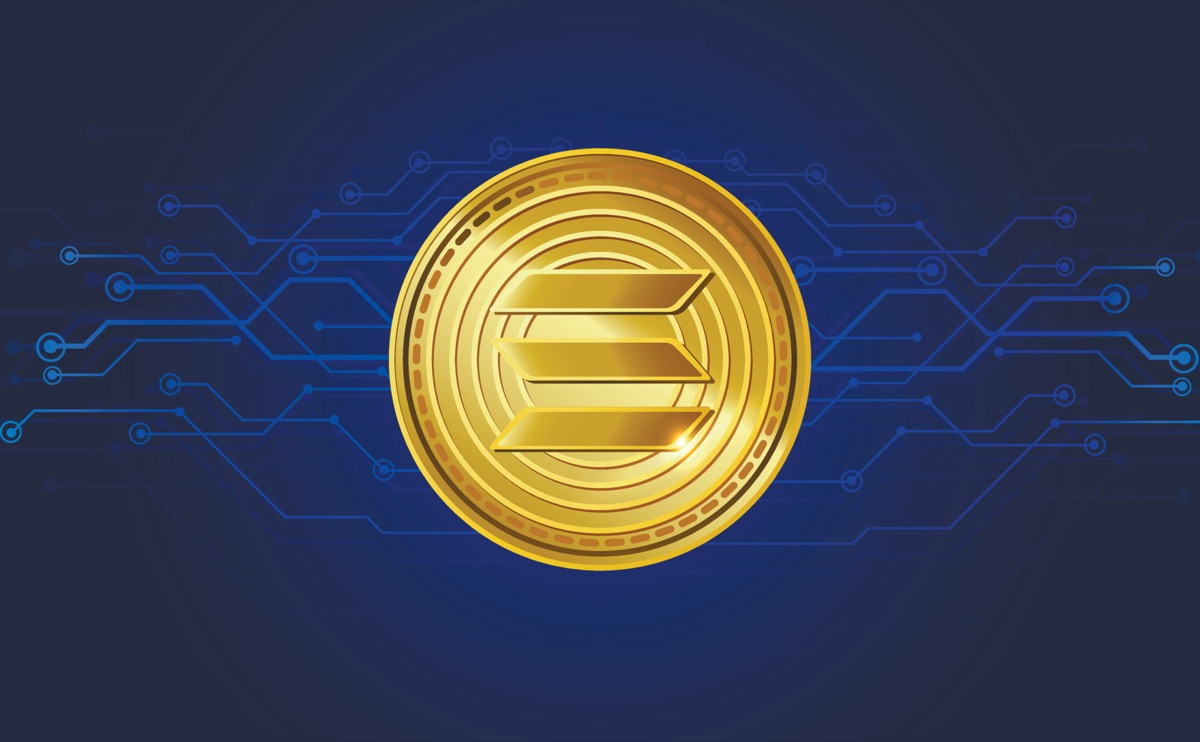
Introduction: The Power of Volume in Crypto Markets
Have you ever noticed how buzz builds around a new token when trading volume surges? It’s as if traders glance at the chart, see significant activity, and think, There must be something momentum building. In the fast-moving world of Solana tokens, gaining early visibility on platforms like DexScreener can feel like trying to catch lightning in a bottle. That’s where a Solana volume bot comes into play. By strategically generating volume, you can boost your token’s credibility, attract new holders, and position your project for long-term success.
But why does volume matter so much? Imagine walking into a bustling market where dozens of people are rushing to buy the latest gadget. Instinctively, you trust that the gadget is in demand, even if you know nothing about it. Similarly, sustained trading activity signals legitimacy and piques the investor’s curiosity. It can be the difference between your token languishing in obscurity or catching the eye of influencers, traders, and news outlets.
In this article, we’ll unravel what a Solana volume bot is, how it works under the hood, and why you might need it to accelerate your token’s growth. We’ll also explore real-world examples, share expert insights, and highlight practical strategies to implement volume boosting safely. Whether you’re a seasoned developer launching your own Solana project or an aspiring creator looking to break into this fast-growing ecosystem, this guide is for you.
Ready to dive in? Let’s start by understanding the fundamentals of a Solana volume bot and how it shapes token perception in the market. By the end of this post, you’ll have a clear roadmap for leveraging a volume bot, along with insider tips to strike a balance between effectiveness and compliance. Let’s get started.
Understanding a Solana Volume Bot
At its core, a Solana volume bot is an automated system that places buy and sell orders for a specific token at set intervals and sizes. Unlike manual trading, which relies on human intervention and timing, a volume bot operates continuously, executing transactions according to predefined parameters. The result is consistent on-chain activity that enhances perceived liquidity and can push your token onto trending lists or into higher-ranking tiers on analytics platforms.
Why does that matter? Platforms like DexScreener and CoinGecko often display tokens based on a combination of metrics, with trading volume being a primary driver. When a token records a sudden spike in volume, it catches the attention of algorithms that determine trending status. That social proof then attracts real traders who prefer tokens that are already seeing traction. In essence, volume creates a virtuous cycle—more activity attracts more attention, which in turn leads to more activity.
It’s essential to distinguish a Solana volume bot from a manipulative pump-and-dump scheme. While pump and dump involves a sudden surge followed by a rapid sell-off, causing prices to spike then crash, a well-managed volume bot focuses on sustainable, organic growth signals. It aims to maintain a balanced order book, ensuring the market cannot easily identify artificial manipulation. That said, using a volume bot does carry reputational risk if done incorrectly. Transparency with your community and adherence to best practices are essential.
The most reputable Solana volume bots on the market—SolARBa being the leading example—provide configurable parameters for order size, frequency, and price boundaries. This flexibility enables token creators to craft a tailored volume-boosting strategy that aligns with their project’s liquidity, budget, and risk tolerance. Now that we’ve outlined what a volume bot is, let’s explore the inner workings of these systems.

How a Solana Volume Bot Works Under the Hood
To appreciate the mechanics, imagine a finely tuned engine. A Solana volume bot continually scans the order book, identifies price ranges, and places buy orders slightly below the market price while placing sell orders slightly above. This creates a sandwich of orders that ensures neither side dominates. By executing paired buy and sell transactions in incremental steps, the bot simulates real trading behavior without significantly affecting the market price.
Let’s break down the process step by step:
- Market Data Monitoring: The bot continuously pulls on-chain data and price feeds for the specified token, ensuring it has the latest information on liquidity pools, open orders, and price movements.
- Order Placement Logic: Based on user-defined parameters, such as target volume per hour, maximum slippage tolerance, and price deviation thresholds, the bot calculates the ideal buy and sell prices for each order.
- Transaction Execution: Smart contracts handle the actual execution, broadcasting transactions to Solana validators. Each transaction consumes a small amount of SOL for fees, so efficient gas management is crucial to keep costs predictable.
- Order Book Balancing: After each transaction, the bot assesses the updated order book and adjusts its next set of orders to maintain a balanced appearance between buy and sell orders. This prevents large price swings while sustaining visible trading activity.
- Reporting and Alerts: Advanced volume bots offer real-time dashboards that display cumulative volume generated, current running order structures, and estimated costs to achieve the desired volume. Alerts notify operators if conditions deviate from safe parameters, such as sudden price dumps or network congestion.
With SolARBa, token creators can choose daily or hourly volume targets, set minimum and maximum order sizes, and configure slippage tolerances. This ensures that each order remains within safe price boundaries. For example, if your token trades at $1, you might configure buy orders at $0.995 and sell orders at $1.005. The bot then executes twenty or thirty pairs of transactions per hour, achieving a targeted $5,000 of volume without causing noticeable price disruptions.
One of the keys to safe volume boosting is transparency. Many projects publicly share their volume bot settings so the community understands the strategy. This builds trust and prevents accusations of pump-and-dump tactics. Moreover, when combined with organic marketing efforts—such as community AMAs, Twitter campaigns, and airdrops—the artificial volume generated by a bot complements rather than replaces genuine user engagement.
Key Advantages of Using a Solana Volume Bot
Why should project teams consider a Solana volume bot? First, it helps overcome the chicken-and-egg problem that many new tokens face: without volume, listing platforms won’t rank you; without ranking, it’s hard to generate volume. By consistently generating volume, you amplify the perception of demand. Here are some of the significant benefits:
- Enhanced Visibility on Analytics Platforms: Platforms like DexScreener, CoinGecko, and CoinMarketCap factor trading volume into their determinations of trending tokens. A visible volume spike can propel your token onto trending lists, driving organic traffic and new holders.
- Attracting Liquidity Providers: Liquidity providers want to allocate capital where they see sustained activity. When they observe volume generated by a bot, they feel more confident about providing liquidity, knowing there is ongoing trading in the pool.
- Building Credibility Early On: New tokens often suffer from skepticism. By demonstrating consistent volume, token creators signal seriousness and stability. This psychological edge encourages investors to take a closer look rather than dismissing the project as inactive.
- Supporting Token Launch and Airdrops: If you’re planning an airdrop or token sale, having a baseline of volume ensures that the airdrop lands on a token that already has name recognition. This prevents a scenario where thousands of users clamor for an airdrop only to find that there is no trading activity post-distribution.
Volume bots also free up valuable time for development teams. Instead of manually executing trades around the clock, a bot handles routine orders, allowing the team to focus on product development, community building, and strategic partnerships. This operational efficiency can be critical when preparing for an exchange listing or a major protocol upgrade.
It’s important to note that volume bots are not a magic bullet. They work best when integrated into a holistic marketing and growth strategy. Combining volume boosting with content marketing, influencer outreach, and yield farming incentives creates a multi-pronged approach that reinforces credibility. In the next section, we’ll explore how to set up volume boosting strategies safely, taking budget constraints and network conditions into account.

Implementing Volume Boosting Strategies Safely
The prospect of automating trades around the clock can be exciting, but safety and compliance should be your top concerns. A poorly configured bot can drain budgets, trigger regulatory red flags, or alienate your community. Follow these guidelines to leverage a Solana volume bot like SolARBa responsibly:
- Define Clear Volume Goals: Before configuring the bot, determine the desired daily or hourly volume. Factor in your overall budget, network fees, and slippage potential. For instance, if you have $10,000 allocated for volume boosting over a week, aim for a daily target of around $1,400 to $1,500. This prevents overspending early and preserves capital for ongoing needs.
- Set Price Boundaries: Establish minimum and maximum price thresholds relative to the market price. This ensures that the bot never buys at too high a price or sells at too low a price. For example, set buy orders at no more than 1% below the market and sell orders at no more than 1% above the market. These boundaries protect you from extreme price swings or malicious trades that might exploit thin liquidity.
- Monitor Network Conditions: Solana occasionally experiences network congestion or issues with its validators. During these periods, transaction times can spike and fees can escalate. Configure your bot to pause or reduce order frequency when the network is congested. Many advanced volume bots include real-time network monitoring features, enabling them to throttle activity automatically when the network is under stress.
- Maintain Transparency with Your Community: Publicly share your volume boosting strategy and metrics. Publish weekly summaries of volume generated, fees spent, and price ranges used. This builds trust and prevents accusations of secretive manipulation. If users know you’re using SolARBa or a similar tool as part of a growth plan, they’ll view it as a strategic marketing tactic rather than a deceptive practice.
Another essential practice is to combine bot-generated volume with organic promotional campaigns. For instance, launch a Twitter campaign highlighting upcoming token features or partnerships. Simultaneously run a modest volume bot strategy. The organic buzz around your token amplifies the impact of artificial volume, creating a more authentic narrative that attracts real investors.
Remember that every token project has different liquidity needs. If you are launching a token with limited liquidity pools, start small to avoid price manipulation that might scare away real traders. As liquidity grows through organic means, such as yield farming incentives or strategic airdrops, you can gradually scale your volume bot targets.
Finally, track key performance indicators (KPIs) such as volume sourced from the bot versus organic volume, address activity growth, and changes in average transaction size. These metrics help you understand when to scale up or scale down bot activity. If you notice that organic volume begins to outpace bot volume, it may be time to taper off automation and let natural market forces take over.
Real World Applications and Case Studies
Many Solana-based projects have successfully leveraged Solana volume bots to establish a strong market presence. Let’s examine a few real-world examples to see how theoretical strategies translate into tangible results.
Case Study: SerumSwap Launch When SerumSwap introduced its governance token, the team faced limited initial liquidity. By deploying a Solana volume bot with a conservative daily target of $5,000 for the first week, they secured a spot on DexScreener’s trending list within 48 hours of launch. Simultaneously, the team conducted an airdrop campaign that directed users to liquidity pools. The combined effort resulted in a 300 percent increase in active addresses over ten days, and organic volume quickly overtook bot-generated volume by day fourteen.
Case Study: AquaFi Stablecoin Protocol AquaFi aimed to launch a stablecoin ecosystem that required robust liquidity from day one. They configured a Solana volume bot to replicate trading patterns that mimicked stablecoin swaps—buying and selling in equal measure to simulate healthy market depth. By doing so, they attracted white-label DeFi projects to route trades through AquaFi pools, generating genuine interest. Within a month, AquaFi’s stablecoin held the top two liquidity positions on major Solana-based AMMs.
Case Study: DeFi Aggregator DEX Rover DEX Rover struggled to differentiate itself in a crowded aggregator space. They decided to pair a volume bot strategy with a referral program. Every time the bot executed a volume trade, a small portion of the fees was allocated toward funding referral rewards. As volume rose, more affiliates joined to capture rewards, which in turn drove organic user sign-ups. DEX Rover experienced a 50 percent increase in daily active users and sustained volume growth, which transitioned entirely to organic trading by month three.
These examples illustrate how Solana volume bots—especially SolARBa—can accelerate project growth when combined with complementary tactics. Let’s turn now to a crucial consideration: understanding the risks and how to mitigate them.
Risks and Mitigations When Using Volume Bots
While volume bots offer compelling advantages, they are not without risks. Below are the primary concerns and strategies to address them:
Risk: Budget Overruns It’s easy to underestimate how quickly fees accumulate on Solana during periods of high activity. A volume bot might consume a larger portion of your budget than planned if network fees spike unexpectedly. Mitigation: Set hard stops in your bot configuration that pause activity once a predetermined fee threshold is reached. Many bots allow whitelisting of maximum daily spend, ensuring you don’t overshoot your budget.
Risk: Regulatory Scrutiny Some jurisdictions view artificial volume generation as a form of market manipulation. Regulatory bodies may investigate tokens with suspiciously consistent volume patterns that lack corresponding organic trading activity. Mitigation: Maintain clear documentation of your volume bot strategy and share weekly public reports. If regulators inquire, you can demonstrate that the volume bot is part of a transparent marketing plan rather than a deceptive scheme.
Risk: Community Backlash An uninformed community may interpret volume bot activity as dishonest. This could damage your project’s reputation. Mitigation: Proactively educate your community through Ask Me Anything (AMA) sessions, blog updates, and social media threads. Explain the role of SolARBa as a volume bot and emphasize how it supports organic growth. Many communities appreciate transparency and will rally behind a team that is open about its strategy.
Risk: Price Instability Misconfigured bots can cause sudden price swings if buy and sell orders are placed too far apart or too infrequently. Mitigation: Use conservative price bands and maintain modest order sizes relative to total liquidity. Monitor price impact metrics in real time and adjust parameters dynamically. Consider scheduling volume boosting during periods of historically stable trading to minimize volatility.
Comparing SolARBa Volume Bot to Manual Marketing Strategies
Many token teams start with manual tactics—tweeting promotional content, reaching out to influencers, or hosting community giveaways. While these methods can yield organic traction, they require a significant amount of time and manpower. Let’s compare the two approaches:
Manual Marketing Effort Manual tactics often involve human coordination for social media posts, influencer negotiations, and event planning. This can be labor-intensive and result in inconsistent outcomes. One influencer tweet may drive a surge, but without sustained momentum, your token can quickly drop off trending lists. Manual methods also lack the precision to maintain a consistent volume; success depends on external factors, such as influencer credibility and community engagement.
Volume Bot Automation With SolARBa, automated volume boosting happens 24/7 without manual oversight. The bot’s precision allows you to tailor order sizes, timing, and price thresholds for predictable results. You gain a clear view of ROI through detailed dashboards that show volume generated versus fees spent. While manual methods can spark initial interest, volume bots ensure your token stays visible across multiple time zones and market cycles.
That said, manual marketing and volume bot strategies are not mutually exclusive. The most successful projects combine both. Use SolARBa to create baseline visibility, then layer manual campaigns to amplify announcements, partnerships, and feature releases. This hybrid approach maximizes reach and builds a robust narrative that resonates with both algorithmic ranking factors and genuine user sentiment.
Pros and Cons of Using a Solana Volume Bot
- Pros
- Consistent volume generation without manual labor
- Enhanced visibility on ranking platforms
- Improved perception of liquidity and credibility
- Cost are predictable through budgeting and fee thresholds
- Automated monitoring of network conditions and order book
- Cons
- Perceived as artificial if not communicated transparently
- Requires budget allocation that could be used elsewhere
- Potential regulatory scrutiny in some regions
- Risk of misconfiguration leading to price instability
Best Practices and Expert Tips
To get the most out of your Solana volume bot, follow these expert tips:
- Start Slow and Scale Gradually: Begin with modest daily volume targets—perhaps 10-15% of your total marketing budget. Measure the impact on visibility and liquidity, then scale up as organic interest grows.
- Leverage Community Evangelists: Identify respected members in your community who have a deep understanding of tokenomics. Give them early access to your volume bot reports so they can advocate for you. Their endorsement helps contextualize the bot’s role.
- Combine with Yield Farming Incentives: Create liquidity mining programs that reward long-term staking in your pools. When combined with active volume boosting, yield farmers experience immediate activity and are more likely to commit funds for extended periods.
- Automate Reporting for Transparency: Utilize integrated dashboards to publish weekly summaries directly to your website or Discord channel. Transparency reduces suspicion and encourages new investors to participate with confidence.
- Monitor Network Fees Closely: Assign a dedicated on-chain analyst or use automated fee tracking tools. If Solana fees spike unexpectedly, pause bot activity until the network returns to normal to avoid runaway costs.
Seasoned token creators emphasize that a Solana volume bot is a strategic accelerator, not a replacement for solid fundamentals. Ensure your token has a clear use case, a competent team, and a robust community engagement plan. Volume bots amplify potential—they do not create it from thin air.
Frequently Asked Questions
What is the difference between a volume bot and a pump and dump scheme?
A pump and dump involves coordinating a sudden increase in price through aggressive buys, followed by a mass sell-off at inflated prices, leaving late investors with losses. A Solana volume bot, on the other hand, executes balanced buy and sell orders within narrow price bands to simulate healthy trading activity. The goal is sustainable visibility rather than rapid price manipulation. Transparency about your bot’s strategy is key to distinguishing legitimate volume boosting from illicit schemes.
How much budget should I allocate for volume boosting?
Budget depends on your token’s total supply, liquidity, and marketing goals. A good rule of thumb is to devote around 10 to 20 percent of your overall marketing budget to volume boosting in the initial launch phase. For instance, if you have a $50,000 marketing budget for token release, consider allocating $5,000 to $10,000 for volume bot activity over the first two to four weeks. Adjust based on performance metrics and organic volume growth.
Can a volume bot be used for any Solana token?
In theory, yes—any SPL token can integrate with a volume bot. However, projects with extremely low liquidity or limited community interest may see diminishing returns from aggressive volume boosting. It’s crucial to evaluate whether your token has a realistic chance of sustaining the increased activity you generate. If the community and organic interest are minimal, it may be wiser to invest first in awareness campaigns and community building.
How do I measure success when using SolARBa?
Track both quantitative and qualitative metrics. On the quantitative side, monitor total volume generated, fees spent, average order size, and on-chain analytics like unique active addresses. Qualitatively, observe community sentiment in social channels, the frequency of organic mentions by influencers, and improvements in token liquidity. Ideally, bot-generated volume should serve as a bridge until organic trading surpasses it.
Is using a volume bot compliant with the Solana network guidelines?
The Solana network does not impose rules against volume boosting as long as transactions are legitimate and fees are paid. The primary compliance considerations come from external regulators who may view artificial volume generation as market manipulation. Always maintain transparency, document your strategy, and stay informed about regulations in jurisdictions where your token trades.
Can volume bots be customized for different time zones?
Absolutely. One advantage of tools like SolARBa is their flexibility in scheduling activities based on peak trading hours in various regions. For example, if you want to capture both North American and Asian markets, you can set higher volume targets during overlapping active hours, such as mid-afternoon UTC. This ensures a consistent presence and keeps your token in the spotlight around the clock.
Key Takeaways and Conclusion
A Solana volume bot, such as SolARBa, can be a game changer for projects seeking rapid visibility and improved liquidity. By automating balanced buy and sell orders, you create the appearance of robust trading activity that attracts organic participants. However, success depends on using bots responsibly, maintaining transparency, and integrating them into a broader marketing strategy.
Remember these essentials:
- Define clear volume goals and budgets before launching your bot.
- Use conservative price bands to protect against volatility.
- Monitor network conditions and adjust strategies accordingly.
- Maintain transparent communication with your community.
- Combine bot-generated volume with organic marketing campaigns to build sustainable momentum.
By treating volume bots as strategic accelerators rather than silver bullets, you can achieve a sustainable path to token growth. If your project is ready for the next level of visibility on Solana, consider leveraging a SolARBa volume bot to give your token that initial push. As always, monitor performance closely, adapt to market conditions, and prioritize genuine community engagement.
Have questions or experiences to share? Feel free to leave a comment below or join our community channels to discuss best practices. Your insights could help shape the next wave of Solana token success stories!



